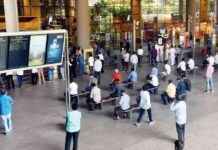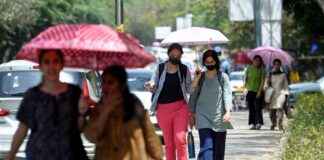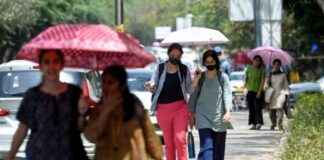Andheri Leads Ganpati Visarjan Numbers, Kandivali Follows Closely
Mumbai witnessed a total of 66,339 Ganesh idols being immersed during the 1.5-day Visarjan on Sunday into the early hours of Monday. According to data from the Brihanmumbai Municipal Corporation (BMC), 30,558 idols were immersed in artificial ponds, while 35,781 were submerged in natural water bodies. This annual event is a significant part of the Ganesh Chaturthi festival, where devotees bid farewell to Lord Ganesha by immersing his idols in water bodies.
In Mumbai, there are a total of 263 locations where citizens can perform the Visarjan, spread across the city. Out of these, 189 are artificial ponds created by the BMC, while 74 are natural settings such as lakes and beaches. The construction of artificial ponds aims to provide an environmentally friendly option for idol immersions, reducing the pollution caused by immersing idols in natural water bodies.
Highest Immersions in Artificial Ponds and Natural Spots
According to BMC data obtained by FPJ, the R-South ward, encompassing Kandivali East and West, recorded the highest number of immersions in artificial ponds during the 1.5-day Visarjan, with 3,318 idols being submerged. Following closely behind was the K-East Ward (Andheri East) with 3,248 idols, and the K-West Ward (Andheri West) with 2,409 immersions. These areas saw a significant turnout of devotees participating in the Visarjan rituals.
In terms of immersions in natural spots, the K-West ward topped the list with 5,324 idols being immersed. This was followed by the S ward and D ward, with 4,251 and 3,559 Visarjans respectively. The immersion of idols in natural water bodies adds a traditional touch to the Visarjan ceremony, connecting devotees with nature and the divine spirit of Lord Ganesha.
Regional Breakdown of Immersions
In total, the K-West ward recorded the highest number of immersions, with 7,733 idols being immersed in both artificial ponds and natural spots. The R-South ward and S ward followed closely behind with 6,113 and 5,409 immersions respectively. Other wards such as P-North, R-Central, F-South, and E ward also saw a significant number of immersions, showcasing the widespread participation in the Ganpati Visarjan festivities across Mumbai.
The western suburbs of Mumbai have the highest number of artificial ponds for idol immersions. The P-South ward, covering areas like Goregaon, leads with 18 ponds, followed by P-North (Malad) with 13 ponds, and R-South (Kandivali) with 12 ponds. Each ward has contributed to providing devotees with accessible locations for the Visarjan ritual, ensuring a smooth and environmentally conscious conclusion to the Ganesh Chaturthi celebrations.
In the eastern suburbs, the S ward in Bhandup has the most artificial ponds with a total of 13. This is followed by N ward (Ghatkopar) with 7 ponds, and M-West (Chembur West) and T ward (Mulund) with 4 ponds each. The distribution of artificial ponds across different wards in Mumbai highlights the efforts made by the BMC to accommodate the diverse needs of devotees during the Ganpati Visarjan festivities.
South Bombay also boasts several artificial ponds for idol immersions, with F-South ward leading the way with 15 ponds. E ward (Byculla) follows closely with 13 ponds, while D ward (Malabar Hill) and F-North ward (Sion Matunga) have 10 and 7 ponds respectively. The presence of artificial ponds in various wards of South Bombay reflects the rich cultural heritage and religious traditions observed during the Ganesh Chaturthi festival in the region.
In conclusion, the Ganpati Visarjan ceremony in Mumbai is a vibrant and significant event that brings together communities to celebrate and bid farewell to Lord Ganesha. The widespread participation in the Visarjan rituals, both in artificial ponds and natural water bodies, showcases the deep-rooted cultural significance of the festival in the city. As Mumbai continues to evolve and adapt to modern environmental concerns, the construction of artificial ponds by the BMC provides a sustainable solution for devotees to carry out their religious practices while preserving the ecosystem of natural water bodies.




















